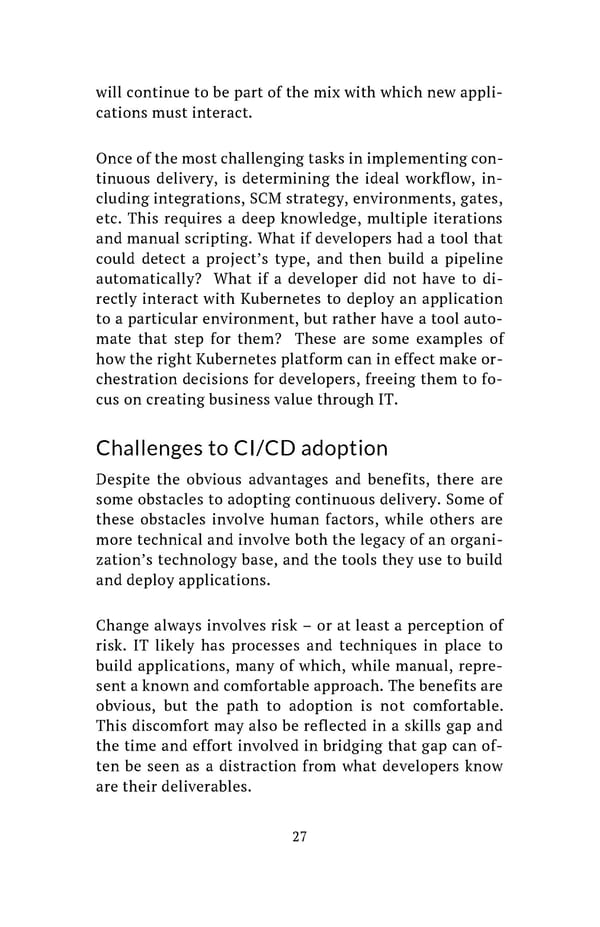will continue to be part of the mix with which new appli- cations must interact. Once of the most challenging tasks in implementing con- tinuous delivery, is determining the ideal workflow, in- cluding integrations, SCM strategy, environments, gates, etc. This requires a deep knowledge, multiple iterations and manual scripting. What if developers had a tool that could detect a project’s type, and then build a pipeline automatically? What if a developer did not have to di- rectly interact with Kubernetes to deploy an application to a particular environment, but rather have a tool auto- mate that step for them? These are some examples of how the right Kubernetes platform can in effect make or- chestration decisions for developers, freeing them to fo- cus on creating business value through IT. Challenges to CI/CD adoption Despite the obvious advantages and benefits, there are some obstacles to adopting continuous delivery. Some of these obstacles involve human factors, while others are more technical and involve both the legacy of an organi- zation’s technology base, and the tools they use to build and deploy applications. Change always involves risk – or at least a perception of risk. IT likely has processes and techniques in place to build applications, many of which, while manual, repre- sent a known and comfortable approach. The benefits are obvious, but the path to adoption is not comfortable. This discomfort may also be reflected in a skills gap and the time and effort involved in bridging that gap can of- ten be seen as a distraction from what developers know are their deliverables. 27
 Building Cloud Native Apps Painlessly Page 30 Page 32
Building Cloud Native Apps Painlessly Page 30 Page 32